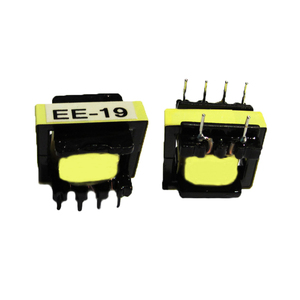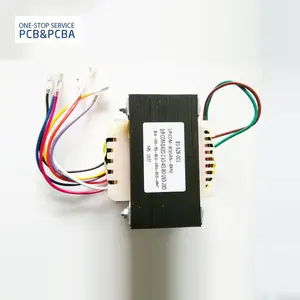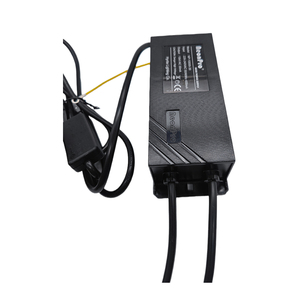(20137 products available)

































































































































































A transformator neon is a small transformer that increases electrical voltage for use with neon lights and tubes. They come in various types, which include:
Step-up transformers
Step-up transformers increase the voltage while decreasing the current. This lower current means less energy is lost as heat when the electricity travels longer distances. Step-up transformers are crucial for power transmission over long distances. They help transmit electricity efficiently from power plants to substations that are closer to consumers.
These transformers can increase the voltage to anywhere between 2,000 and 400,000 volts. This high voltage makes it possible for the electricity to travel long distances without losing too much energy.
Step-down transformers
Step-down transformers do the opposite of their step-up counterparts. They reduce the voltage and increase the current. This type of transformer is used for neon signs and lights.
They also power electrical devices that operate at lower voltages. For instance, a transformer reducing voltage from 10,000 to 120 volts is a step-down transformer. The reduced voltage is safer and more useful for most devices.
Autotransformers
Autotransformers are a unique type of step-down transformer. They have only one coil that serves as both the primary and secondary winding. This coil has several tapping points. The voltage is reduced by connecting to a tap closer to the coil's start. Autotransformers are efficient because they only require a single coil. They are mostly used when only a small reduction in voltage is needed. A good example is an American neon transformer.
Other types of transformers
There are various other transformer types. These include current transformers that measure and monitor high currents and isolation transformers. The latter provides electrical isolation between the primary and secondary circuits.
A neon transformer has various features and functions, as discussed below:
Voltage Transformation
A neon transformer allows for the transformation of low voltages, thus enabling the safe and effective illumination of neon tubes and lights. It boosts the voltage required to ignite neon gas within tubes or lights, thus producing a bright glow.
Isolation
Isolation enhances the safety of neon light installations. It minimizes the risk of electric shocks by separating the input and output circuits. This feature makes neon transformers safer than directly using high-voltage AC power.
Rectification
Rectification converts the AC voltage to DC voltage. Some neon lights and tubes operate more effectively with DC power. The transformer ensures the tubes receive the appropriate power type and voltage.
Current Limiting
Neon transformers control and limit the output current, ensuring it is within the safe operating range of the neon tubes. This feature prevents excessive current that may damage tubes or lead to overheating and catastrophic failures.
Compact Design
Neon transformers have a compact size. This makes them easy to integrate into various spaces and designs. Their compact design feature also enables the production of lightweight transformers that are easily portable.
Durability
Neon transformers are built with materials that can withstand harsh environments. They can operate under different environmental conditions, such as extreme temperatures and humidity. Additionally, they can resist physical impacts, which ensures their longevity.
High Efficiency
These transformers operate at a high efficiency level. They minimize energy losses during voltage transformation. As a result, this leads to effective neon light or tube operation and lower energy costs.
Multiple Outputs
Some neon transformers have multiple outputs to power several neon lights or tubes. Additionally, they can provide different voltage and current combinations to suit various neon tube specifications and requirements.
Transformator neon are commonly used in a variety of applications, including:
When choosing a neon transformer, consider the following factors:
Power requirements
The intended application should determine the power requirements. Higher power levels are necessary for larger or more complex neon signs. Additionally, a transformer with a higher output voltage may be needed for tubing with a larger diameter. On the other hand, smaller signs or tubing with a smaller diameter need less power and voltage.
Output voltage and current
The transformator neon output voltage should be constant. A constant output voltage will ensure the uniform brightness of the neon lights. Also, a constant output current will ensure the safety of the neon tubes, preventing overheating and burning out.
Size and design
When choosing a neon transformer, consider the available installation space. If there is little space, choose a compact transformer. Additionally, consider the size and design of the transformer if aesthetics is important.
Efficiency
The transformator neon efficiency impacts its operating costs and performance. A more efficient transformer has a higher output power-to-input power ratio. Thus, less energy is lost during operation, resulting in lower operating costs. Additionally, a more efficient transformer produces less heat. As a result, its components experience less wear and tear, leading to the transformer's longevity.
Safety Features
The safety features of the neon transformer protect it from damage during operation. They also protect the connected neon tubes. For example, an overcurrent protection device automatically disconnects the transformer from the circuit. The device prevents overheating and damage to the transformer and tubes. Additionally, short-circuit protection prevents damage to the transformer and tubes in case of a short circuit.
Cooling
Cooling is important because it prevents overheating. Overheating can lead to the damage of the transformer and the connected neon tubes. As a result, the tubes burn out. Some transformers have built-in fans that promote active cooling. On the other hand, passive cooling transformers use natural convection.
Q1: Can someone use a neon transformer for LED lights?
A1: No, LED lights require a different type of transformer that is specifically designed for them. Neon transformers are not compatible with LED lights.
Q2: How can someone tell if a transformer is bad?
A2: Signs of a bad transformer include flickering or dim neon lights, buzzing sounds, and in more severe cases, broken lights. A bad transformer can also lead to a malfunctioning neon sign.
Q3: What are the safety precautions when handling a neon transformer?
A3: Always disconnect from the power source before handling. Wear appropriate personal protective equipment (PPE) and follow manufacturer guidelines. High voltage: transformers step up to high voltage, which can be dangerous. Always handle with care and use insulated tools when necessary.